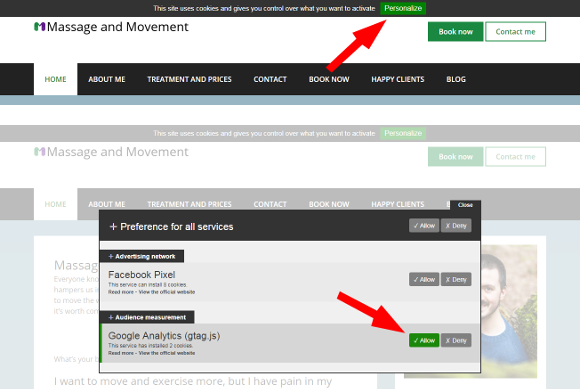In my quest for flexibilty, I experimented a lot on myself, and discovered many interesting things. This weekend I attended Emmet Louis’ workshop on Modern Methods of Mobility (or M3 for short), and it was amazing to see all my intuitions confirmed by an expert, and learn even more. Here are 3 major tools I’ve used, along with some additional insight gained or crystalised in said workshop.
Actively pull yourself into the stretch
We often think of stretching or mobility training as elongating a muscle, or a muscle group, or some other tissue. However, when there is elongating, there also must be shortening. By learning to activate the shortening corresponding to our target stretch, we will gain a three-fold advantage:
- more control over the intensity of stretch,
- more stretching force,
- less tension in the stretched muscles.
 Let’s cover those in slightly more detail:
Let’s cover those in slightly more detail:
More control
If you’re actively pulling yourself into the stretch, you controle how much you’re loading your tissues at each instant. That’s a much better level of control that loading with weights, or by adjusting your position, or have a friend push you. And everybody knows that more control means less risk of injury.
More force
By adding your own muscular force to the loading of your stretch, you will be able to load it more strongly, without the need for props (or in addition to props!) and this form of loading, as explained aboves comes pretty much risk-free as you have complete control at any instant.
Less tension
Our body is a marvellous feat of engineering, and what makes it so is in good part a whole arsenal of reflexes that help it function better. One of those reflexes is called Reciprocal Inhibition (or RI): it makes a muscle relax, whenever its antagonist (the muscle that opposes its action) contracts. For instance, when your hamstrings contract to fold your knee, RI makes your quads relax to let the knee fold properly. What that means for us is that if we actively pull ourselves into a stretch, we will trigger this reflex and relax the muscle we’re stretching more, via RI.
Note also that this training will give you end-range strength in your shortening muscles, as an added bonus. You will very likely cramp them quite hard at the beginning, but with some perseverance you’ll be able to unlock your full mobility potential, in a strong and controlled manner!
Use your mobility
It matter little how flexible you can get in the training room, if you’re not using it often (ideally every day). Only when you’re using it will you start embodying the movements that use that flexibility, and this is what will make it stick. If you’re a professional dancer, acrobat or gymnast, that’s taken care of by your job. However, if you’re an occasional practitioner of one of those disciplines, you’ll have to trick your nervous system into thinking that those movements that use your target mobility are necessary. An example is keeping your knees extended when you tie your shoes to train your pike (forward bend). Or folding the laundry in a deep squat (or as close to that as you can get) on the floor.
Slow eccentric contractions
This one requires a bit more explanations, and I have a full article dedicated to it, but here is a summary if you don’t want to click away. Find a position where gravity assists your stretch, and start way in your comfort zone. Use the muscles you want to stretch to resist gravity, and slowly yield to it to lower yourself into the stretch. That will again, teach you control over your movement, which is crucial to safe exploration of the end your ranges of motion, and also create rather strong shear loads inside your muscle, helping realign the fibres of your fascia (the structural, more passive components of muscles) to allow for the mobility you’re after.
Continue reading: Your First Step Towards Hip Flexibility, Imagery for Ankle Mobility, 5 Daily Opportunities to Perfect Your Posture.
Want more like this?
Check out the following blogs from massage therapists I know from around London:- On The Run Health and Fitness on running, nutrition and sports massage.
- The Soma Room on sports massage and exercise.




No Responses